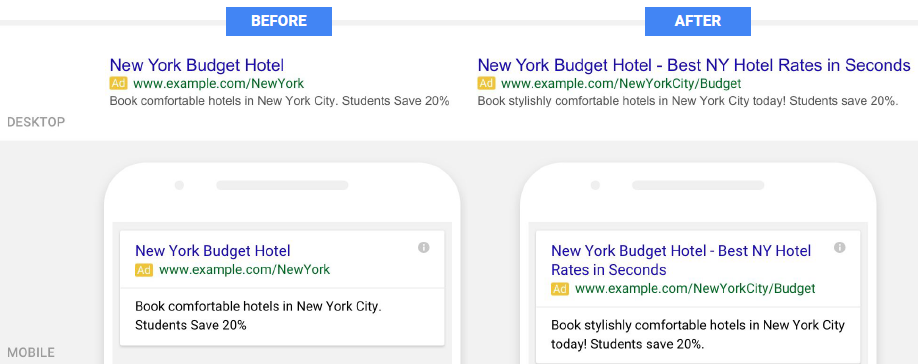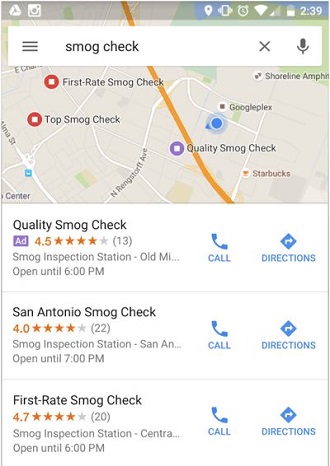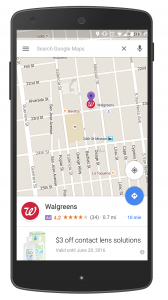
1) 50% More Text for Search Ads
One of the first changes Google announced was that search ads will be eligible for up to 50% more text. That’s right — Google will be affording PPC ads with even more real estate on search results pages. It’s clear that Google is giving extra love to PPC ads because not only do they plan on expanding the text, they’ve already made the switch to adding a fourth placement for ads at the top of search results pages.
The 25-character headline limit will be expanded to two 30-character headlines. The new ads will have one consolidated 80-character description line, instead of two separate 35-character descriptions lines. In the example below, the new format on the right includes more ad space for businesses to better market their unique selling propositions.

2) Device-Specific Bidding
Currently, advertisers set bids for desktop searches and make adjustments for mobile searches. It is very limiting on your ability to customize those critical mobile bids. The current bidding strategy also directly opposes the mobile-first movement that Google emphasizes, making mobile seem like an afterthought.
The new bidding strategy will allow you to have individual bids for desktop, mobile, and tablet all from the same campaign. That means if a certain type of device is more relevant to your audience, you can focus on that device more than the others. This change is coming at a critical time when mobile matters more than ever.

3) Search Ads in Local Pack

Location-related searches account for nearly one third of all mobile searches and are growing 50% faster than other searches. I personally have noticed I rely more and more on mobile for those I-want-to-know moments when I need a specific service in my area. AdWords has taken note of this trend and plans on rolling out a local pack update that allows search ads to be shown with these results when consumers search for physical business locations.
If a campaign has location extensions enabled, then ads will be eligible to show for location-based searches on Google Maps. For example, “car rentals in miami” or “florists near boston.” On smartphones, the GPS settings also bring up nearby businesses to users searching in their location. In the example on the right, “smog check” was searched by a user in San Antonio and resulted in an ad from a local advertiser showing first.
4) Promoted Pins on Google Maps

Promoted pins will allow businesses to showcase special offers and product inventory via Google Maps as consumers navigate to a new location. For example, whether consumers are walking through a city or getting driving directions, they may see a nearby business’s logo on the map during their route. Clicking on the logo pin will reveal more information about the business and their current featured special. In the example to the left, you can see that Walgreens is featuring a deal on contact solution.
When clicking to expand the ad and see more information, you’ll see specific information focused on advertising products and specials — further enticing potential customers to stop by and get your great deal.
From the new changes to search ads to the display of local search results, we at The Web Guys stay up to date on all the current events from Google and can advise you on how to best market your business in the always-changing world of digital marketing. To learn how we can manage your AdWords account for success, contact us today at (317) 805-4933.

